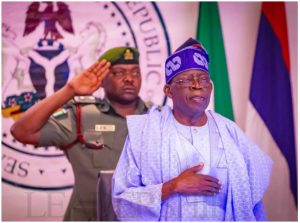The Evolution of Fashion in Africa

African clothes and fashion is a broad subject that can offer a glimpse into several African cultures. Brightly coloured textiles, robes with abstract embroidery, and vivid beaded bracelets and necklaces are only a few examples of the variety of clothing.
Traditional dress differs from nation to nation throughout Africa’s large and diverse continent. African dress patterns all share one thing in common: they are a means of diversity and expression. African fashion is characterized by lavish patterns and colours and is noted for being everything but ordinary.
Most designers that dress models for Western fashion shows relate their outfits to African culture. These are often not even items that Africans wear. People from the diaspora occasionally visit and dress in ways that give off the idea that they are trying to look African, but we are unable to identify whatever style of clothing they are wearing.
African clothing has long been mischaracterized as “tribal” or “exotic” and reduced to leopard skins and mud clothes. It serves as a reference point rather frequently. But the derivative is always valued more than the source.

Evolution Of African Clothing
The majority of Africans did not wear too much clothing because of the continent’s warm environment. Men could get by with animal skins, while women wore wraps around their breasts or waists. Bark cloth, furs, skins, and hides were the first materials used for clothing, while colour pigments and beautifying marks were applied to the remainder of the body.
Males merely wore a belt over the bark cloth that went between their legs. Women did the same thing to cover their fronts by draping the material over their belts. As individuals travelled from one state to another, clothing served to communicate rank, mark a ceremony, or indicate the passage of time. Some traditions dictate that young women only wear skirts and that once they get married, they must wear full-body covers and cloaks.
Raffia was being used by Africans to join fragments of bark fabric. Grass skirts eventually become popular. They also used ornaments to embellish the body portions that were exposed. This included increasingly elaborate jewellery and headdresses made from feathers, bones, bits of ostrich eggshell, and seashells.
Various materials, including fur, skins, bone, animal tails and hair, raffia, wood, grass, bells, and pressed metal, were utilized to create a rich and ornate outfit that was used mostly for formal occasions.

Kuba women decorating woven cloth in the Democratic Republic of the Congo, photographed in 1970. In the past, women were the main creators of the legendary Kuba textiles.
One way to tell one ethnic group from another was by the colours and patterns that were used to produce printed and coloured cloth, woven fabric strips, and beaded clothing. Tribes took great delight in the calibre of their handcrafted clothing. They employed methods that had been handed down from father to son for many years.
The opening of sea lanes connecting Europe, Africa, and the East occurred around the 15th century. The outcome was an increase in trade. Unusual objects came in from all over. Africans coveted them and used them to adorn regional textiles.
Shells, beads, and buttons were frequently utilized on clothing, either as decoration or as the main component. Techniques for weaving have also advanced in several ways. These days, wool, raffia, cotton, and silk are the most common fibres. Textiles that were woven and ornamented came to represent the prestige, social standing, culture, surroundings, and climate of a tribe.
The wax prints that are now commonplace and associated with African fashion first appeared in Africa in the 19th century. This method of pattern production was adopted by the Dutch during their colonization of Indonesia, who also mechanized the procedure. They initially made an attempt to sell it back to Indonesians but failed.
Women started to request particular designs, and individual designs eventually developed into a way for groups of people to communicate covertly. As a result, the business was tremendously successful. Today, it is still thriving.

In African cities, colonization compelled a significant change in daily attire. Traditional clothing was discouraged in many corporate settings even after independence. As a result, the western dress code became fashionable and traditional robes were replaced or altered.
They continued to be common in rural regions, nevertheless. Urban dwellers are now becoming more comfortable wearing traditional attire on regular days. Men who choose to wear kaftans to work on Fridays when the dress code is relaxed are one example.
African fashion is a hot topic in the world today, from runways to celebrities wearing it in movies and music videos. It is nearly impossible to overlook.
Afrobeats and African dancers may be seen on nearly every screen right now, demonstrating how prevalent African culture is nowadays. The world will unavoidably notice what they are wearing as a result of this.
Young Africans are numerous and are seeking harder than ever to re-establish ties to their cultural roots. This involves absorbing local fashion and using it to identify more closely with their roots.
Credit to UMi-1
Also Read: Is December in Africa Serving its Purpose?: A Classic Case of Ghana







